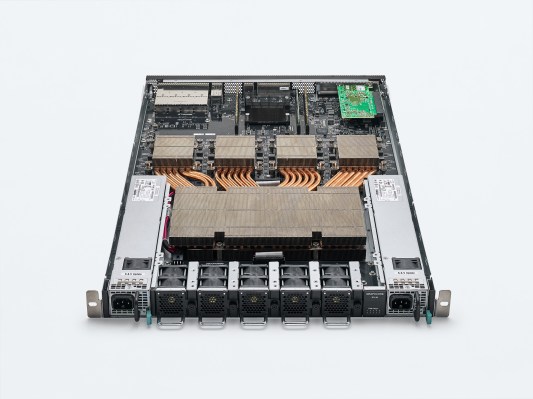Applications based on artificial intelligence — whether they are systems running autonomous services, platforms being used in drug development or to predict the spread of a virus, traffic management for 5G networks or something else altogether — require an unprecedented amount of computing power to run. And today, one of the big names in the world of designing and building processors fit for the task has closed a major round of funding as it takes its business to the next level.
Graphcore, the Bristol, U.K.-based AI chipmaker, has raised $222 million, a Series E that CEO and co-founder Nigel Toon said in an interview will be used for a couple of key purposes.
First, Graphcore will use the money to continue expanding its technology, based around an architecture it calls “IPU” (intelligence processing unit), which competes against chips from the likes of Nvidia and Intel also optimized for AI applications. And second, Graphcore will use the funding to shore up its finances ahead of a possible public listing.
The funding, Toon said, gives Graphcore $440 million in cash on the balance sheet and a post-money, $2.77 billion valuation to start 2021.
“We’re in a strong position to double down and grow fast and take advantage of the opportunity in front of us,” he added. He said it could be “premature” to describe this Series E as a “pre-IPO” round. “We have enough cash and this puts us in a position to take that next step,” he added. The company has in recent weeks been rumored to be eyeing up a listing not in the U.K. but on Nasdaq in the U.S.
This latest round of funding is coming from a roster of financial investors. Led by the Ontario Teachers’ Pension Plan, it also includes participation from Fidelity International and Schroders, as well as previous investors Baillie Gifford and Draper Esprit. Graphcore has now raised some $710 million to date.
This Series E gives Graphcore a definite step up in its valuation — the company last raised money back in February of this year, a $150 million extension to its Series D that valued the company at $1.95 billion — but all the same, it closes off what Toon described as a “challenging” year for the company (and indeed, the world at large).
“I view this year as a speed bump,” he said. “It has been challenging and we’ve realigned to speed things up.”
As it has been for many companies, the year came in different parts.
On one side, Graphcore’s hardware and software product development continued apace with ever-faster processors in ever-smaller packages. In July, Graphcore launched the second generation of its flagship chip, the GC200, and a new IPU Machine that runs on it, the M2000, which the company described at the time as the first AI computer to achieve a petaflop of processing power “in the size of a pizza box.”
But on the other side, the building and launch of those products was largely done with a remote workforce, with employees sent to work from home to help slow down the spread of the coronavirus that has gripped the world and rewritten how much of it operates.
Indeed, the industry at large, and how companies are spending and investing during a period of uncertainty, has also likely shifted. Some companies like Amazon, Apple and Google are all getting more serious about their own chipmaking efforts. Others are caught up in a wave of consolidation: Witness Nvidia’s efforts to acquire ARM in a $40 billion deal.
All of these spell challenges for an upstart like Graphcore. Toon said Graphcore doesn’t have any plans to make acquisitions: Its strategy is based around organic growth.
And, no great surprises here, he is not excited about Nvidia’s acquisition of ARM: “If we’re not careful, things will consolidate too much and that could kill off innovation,” he said. “We have made our position clear to the U.K. government. We don’t think the Nvidia ARM deal is a good thing.” (Somewhat ironic, considering he and Graphcore co-founder Simon Knowles sold a previous startup to none other than Nvidia.)
He also declined to talk about new customers for Graphcore, but he said that there has been interest from financial services companies, and some from the world of healthcare, automotive and internet companies, “large hyperscalers” in his words, that require the kind of technology that Graphcore is building either to run their systems, or to complement processors that they are potentially also building themselves. (Strategic backers of the company include the likes of Microsoft, BMW, Bosch and Dell.)
Graphcore said that the company is shipping its newest products “in production volume” to customers, and Toon said that a couple of big names are likely to be announced in the coming year, one that some believe might actually be calmer overall for the chip industry compared to 2020.
It’s that pull of technology, and specifically the processing demands of the next generation of computing, that investors believe will continue to drive business to Graphcore as the dust settles on this year.
“The market for purpose-built AI processors is expected to be significant in the coming years because of computing megatrends like cloud technology and 5G and increased AI adoption, and we believe Graphcore is poised to be a leader in this space,” said Olivia Steedman, senior managing director, Teachers’ Innovation Platform (TIP) at Ontario Teachers’. “TIP focuses on investing in tech-enabled businesses like Graphcore that are at the forefront of innovation in their sector. We are excited to partner with Nigel and the strong management team to support the company’s continued growth and product development.”
